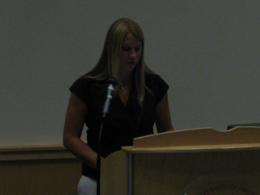May 27 - August 1

Evaluation of NWS Watch and Warning Performance Related to Tornadic Events
Kelly Keene, Paul Schlatter, Jack Hales, and Harold Brooks
Abstract:
Two organizations within the National Oceanic and Atmospheric Administration’s (NOAA) National Weather Service (NWS) are responsible for disseminating critical information to their customers prior to and during severe weather. The Storm Prediction Center (SPC) focuses on conducting an overall assessment of the environmental conditions on the national scale, and issues the appropriate severe weather watches. At the local level, Weather Forecast Offices (WFO) are responsible for issuing warnings to cover imminent severe weather threats. The focus of this research is primarily on the evaluation of the NWS watch and warning performance in relation to tornadic events from 1997 to 2007. Data are obtained from the NOAA Performance Management Website and the SPC watch database. The watch and warning records are matched to each tornadic event, allowing an evaluation of tornado warning performance in relation to watch type and lead time. Statistical analysis of the data reveal interesting results on the nature of the relationship between tornado warnings and whether a watch was in effect, and if so, what type. Tornado warning performance and lead time increases with increasing F-scale intensity and also when there is a tornado watch in effect. The lowest tornado warning statistics occur when no watch is in place. Having a tornado watch in effect greatly increases the Probability of Detection (POD), while slightly decreasing the False Alarm Rate (FAR). For all tornado warnings from 1997-2007, there is an increasing of POD, while maintaining a steady FAR. Finally, the entire tornado warning data set is visualized using a new technique (Paul Roebber, 2008), and also added to a previous study (Brooks 2004).